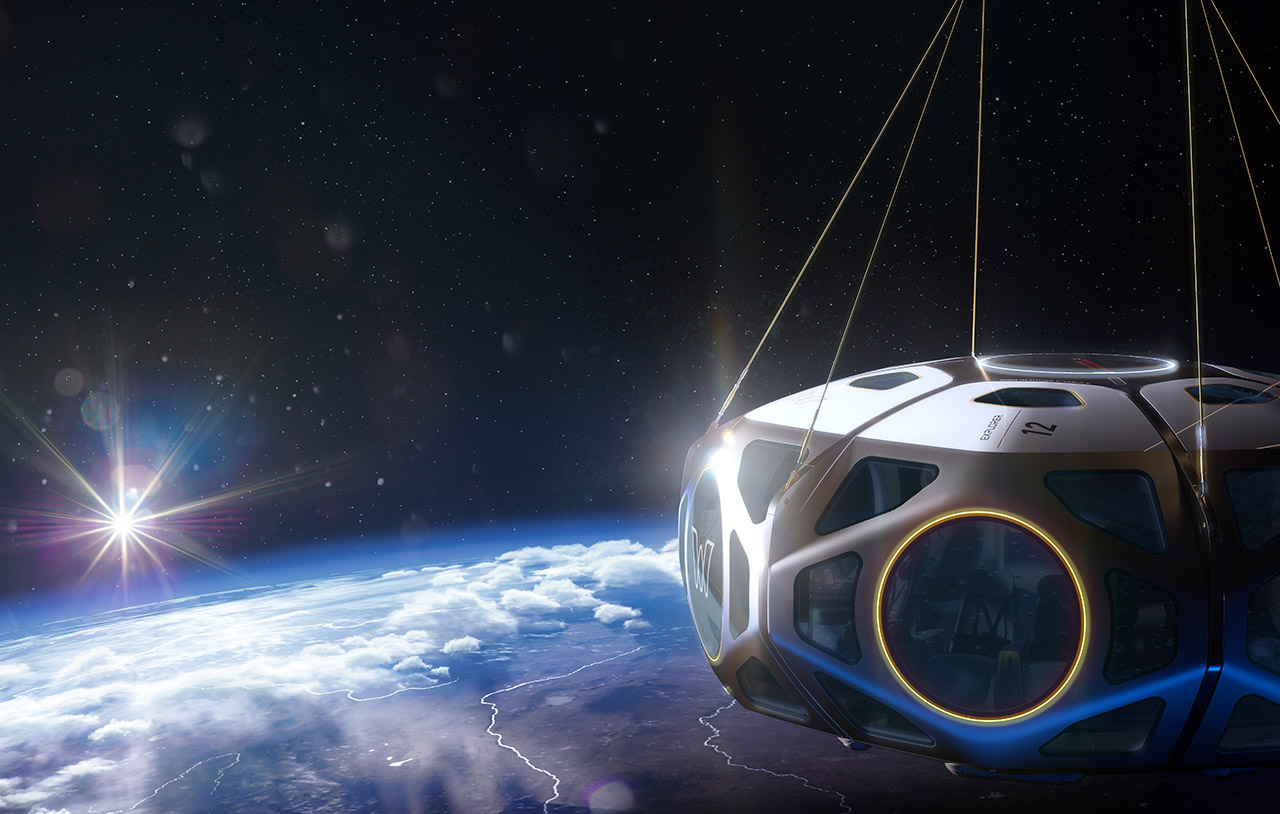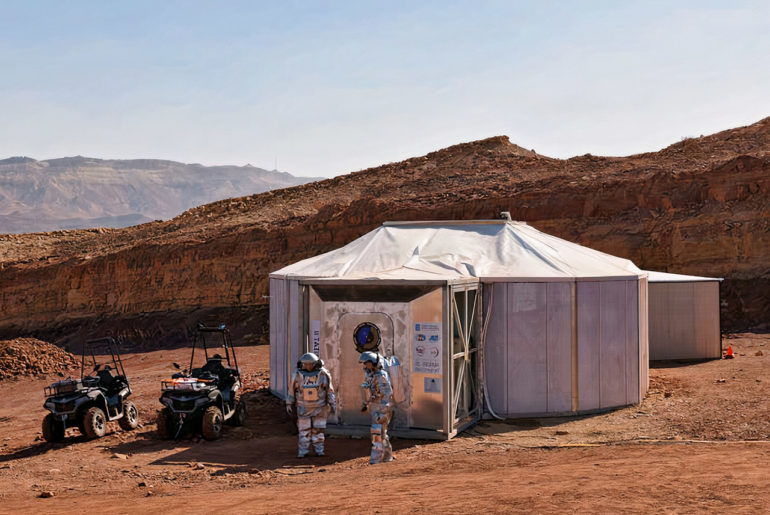
Photo credit: ESO/Bohn et al.
What you’re looking at is the first image of another multi-planet solar system orbiting a Sun-like star that is very much like ours. It was imaged by the European Southern Observatory’s Very Large Telescope (ESO’s VLT), and capturing images of systems with multiple exoplanets are extremely rare, and this is the first one astronomers observed with more than one planet orbiting a star similar to the Sun.

Photo credit: OeWF | FIorian Voggeneder
Six analog astronauts will spend three weeks in isolation simulating life on Mars in the Israeli desert to conduct research and better understand the mental as well as physical health of being on the Red Planet. Operated by the Austrian Space Forum (OeWF), all participants will be wearing a 99-pound prototype pressurized space suit that will impede the astronauts’ movements in an aim to seek out weak points that can be improved upon.

William Shatner, best known for playing Captain James T. Kirk on “Star Trek: The Original Series,” has successfully completed a trip to the edge of space aboard Blue Origin’s NS-18 New Shepard rocket. The reusable rocket and capsule lifted off from Blue Origin Launch Site One, located north of the West Texas town of Van Horn, at approximately 9:50 a.m. local time. The ride vehicle completed an 11-minute flight, four of which let the crew experience weightlessness in outer space, before returning to land.

Radio signals coming from the Milky Way’s galactic center have baffled astronomers at the University of Sydney, since they do not fit any currently understood pattern of variable radio source. This could suggest a new class of stellar object. Officially called ASKAP J173608.2-321635, this object vanished, strengthened, faded, and then reappeared, all at random. These signals were originally detected using the Australian Square Kilometer Array Pathfinder (ASKAP) radio telescope. Read more for a video and additional information.

Can’t afford a Blue Origin, Virgin Galactic or SpaceX trip, but have $50,000 USD to spare? World View has just the space tourism trip for you. The company announced the global launch of its edge-of-space experience, which aims to bring as many people as possible to the edge of space so that at 100,000 feet in a luxurious stratospheric balloon. They are now accepting $500 deposits to reserve a place in line for their commercial flights.

Astronomers have discovered a massive comet lurking on the outskirts of our Solar System using 6 years of data gathered from the Dark Energy Survey. Bernardinelli-Bernstein is currently the largest known and is estimated to be about 1000 times larger than a standard comet, and it has an extremely elongated orbit, traversing inwards from the distant Oort Cloud over millions of years.

European Space Agency (ESA) astronaut Thomas Pesquet never ceases to amaze with his daily photographs captured aboard the International Space Station (ISS), and his latest is of an aurora with a luminous green red slow as clouds swirl around Earth. This phenomenon occurs when solar wind, which is a stream of charged particles from the sun, interacts with Earth’s magnetic field. The interaction causes the particles to accelerate as they enter Earth’s upper atmosphere, colliding with atoms and molecules.

The American Meteor Society has just released footage of the 32,000mph fireball that lit up the North Carolina sky last week. NASA Meteor Watch says that there were many reports of multiple fireballs seen over the United States on September 24th, but the largest grouping of eyewitness accounts – over 80 – is associated with an event that occurred at 7:40 pm Eastern Daylight Time. Read more for the video and additional information.

Hubble Space Telescope continues to capture incredible images of the stars despite being in operation for over 30-years. Its latest is of a remote galaxy that has been greatly magnified and distorted by the effects of gravitationally warped space. This molten “Einstein Ring” was measured to be 9.4 billion light-years away, a galaxy at the peak epoch of star formation in cosmic evolution.

Since the lunar surface has limited sunlight and extremely cold temperatures, landing on the Moon is a difficult task to say the least. Fortunately, there’s lots of dust (lunar regolith), and Masten’s FAST spacecraft has just the technology to make use of it. Simply put, the spacecraft will inject ceramic particles into the rocket’s plumes, thus coating the regolith as the lander descends toward the surface. This forces the particles to collide with the surface, resulting in a solid landing pad.









